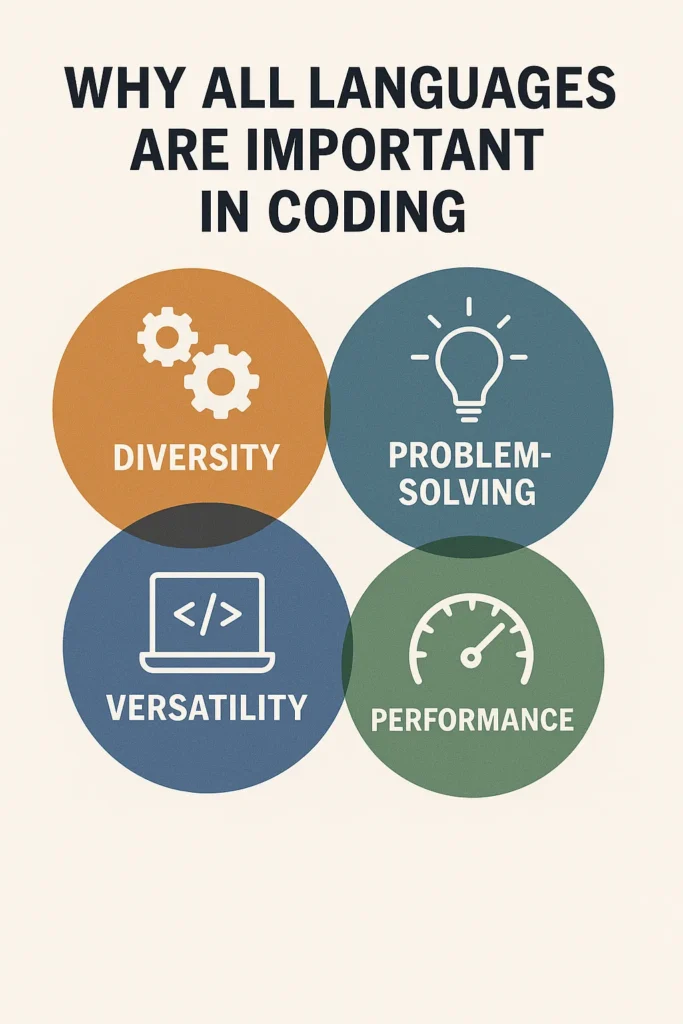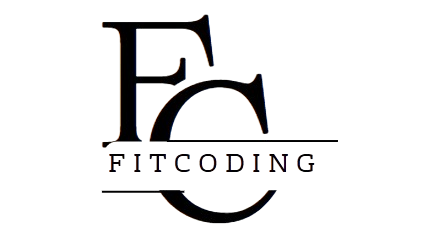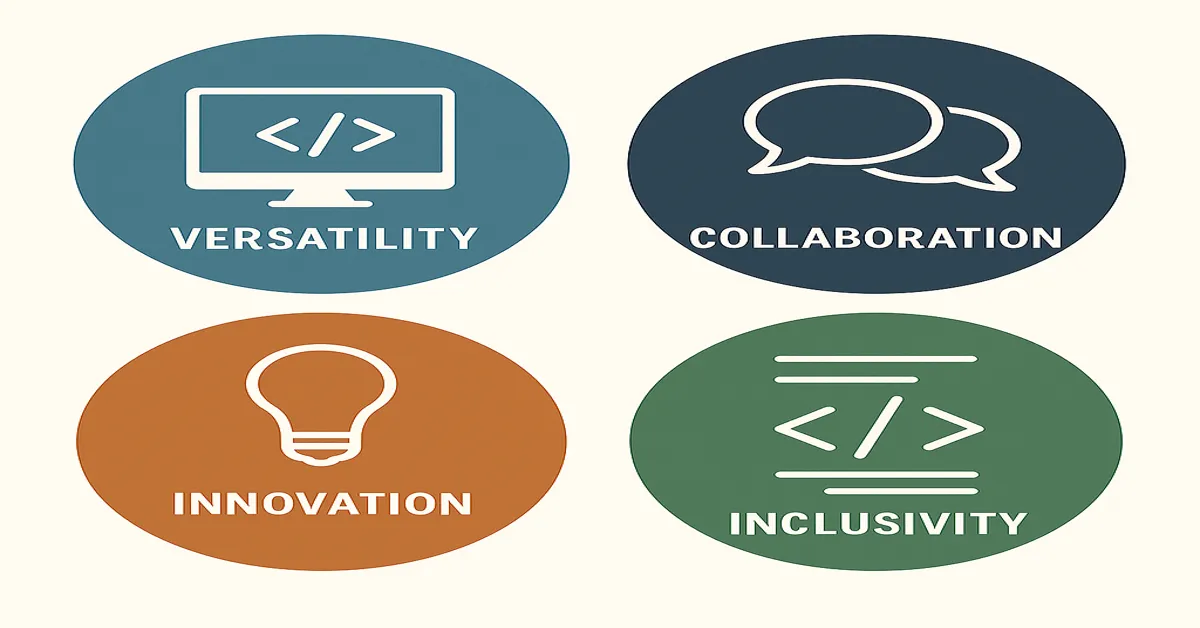In the rapidly evolving world of software development, the debate around “best programming languages” is both perennial and distracting. Rankings fluctuate, communities debate performance metrics, and new frameworks promise to outshine the old. But amid the noise, one enduring truth is often overlooked: all programming languages are important. Each language exists because of a purpose it served, a problem it solved, or a vision it fulfilled. The rich ecosystem of coding languages today isn’t a flaw—it’s a feature.
Understanding why all languages are important in coding is not just an exercise in historical appreciation. It is a strategic perspective that can improve decision-making, foster innovation, and build more inclusive and flexible development environments. This article unpacks the importance of language diversity in software development by exploring how different languages bring unique strengths, cultural influences, architectural paradigms, and community-driven innovation to the global coding landscape.
Language Diversity Reflects Problem Diversity
At the heart of the need for multiple programming languages is the diversity of problems software aims to solve. Coding languages are not interchangeable hammers; they are finely tuned instruments suited for specific kinds of tasks.
Systems vs. Applications
Languages like C and Rust are ideal for low-level system programming due to their control over memory and hardware. They power operating systems, embedded devices, and performance-critical software. On the other end of the spectrum, JavaScript and Python dominate application development with their ease of use, rapid development cycles, and robust ecosystems.
Trying to use one language for every task can lead to inefficiencies, security issues, or poor performance. Recognizing that each problem domain benefits from certain language features is essential for modern development.
Purpose-Driven Syntax
SQL wasn’t created to build mobile apps. It exists to query databases efficiently. HTML isn’t Turing-complete, but it structures the web. Each language’s syntax and features are often shaped by the very problems they were born to solve. Disregarding less popular or less general-purpose languages is to dismiss the very idea of specialization.
Refer This Guide: The Definitive Guide to Web Development Languages in 2025
Innovation Through Syntax and Structure
Every programming language represents a philosophy of how code should be written, organized, and executed. These philosophies are often reflected in the language’s syntax, typing system, and memory management model. Understanding these differences opens new ways of thinking for developers.
Functional vs. Object-Oriented vs. Procedural
Languages like Haskell or Lisp promote functional purity, pushing developers to think in terms of pure functions and immutable data. Meanwhile, Java and C++ encourage object-oriented design, while languages like Go and C promote procedural efficiency.
Each paradigm contributes to the field:
- Functional languages drive innovation in concurrency and data immutability.
- Object-oriented design organizes complex systems.
- Procedural languages offer direct, linear control over operations.
Learning different languages introduces programmers to these paradigms, broadening their thinking and improving their coding practices, regardless of the language they ultimately use.

Cultural and Historical Context in Language Design
Programming languages do not emerge in a vacuum. They are products of their time, influenced by the goals, tools, and limitations of their era.
Historical Progression
COBOL, created in the 1960s, was designed for business use. It reads like English to make it more accessible to non-technical users. C came from the Unix era, designed for systems programming. Python, with its whitespace-sensitive syntax, was created to emphasize readability and simplicity.
Each of these historical contexts contributes to modern programming practices. Many legacy systems in finance still run on COBOL. Unix principles embedded in C have shaped the POSIX standards that define many operating systems today.
Modern Adaptations
Modern languages like Rust, Kotlin, and TypeScript are not purely technical innovations. They reflect social and organizational shifts: emphasis on safety, productivity, and scalability. Rust tackles memory safety; Kotlin addresses Java’s verbosity; TypeScript brings type safety to JavaScript’s dynamic nature.
Appreciating these origins helps developers understand not just how languages work, but why they work the way they do. That insight is often what separates average programmers from great ones.
Languages as Bridges, Not Silos
One of the myths in programming is that languages form isolated camps. In reality, many languages complement each other. Web development is a classic example: HTML, CSS, and JavaScript work together. Backend applications may use Python or Java while relying on SQL for data management.
Polyglot Architectures
Modern applications often use polyglot architectures: different languages for different components. A microservice written in Go might communicate with another written in Node.js. The front end could be in React (JavaScript), and the data handled through GraphQL. All these pieces must work together seamlessly.
Understanding and respecting the roles of each language in such a setup leads to better architecture decisions, improved system performance, and greater maintainability.
Interoperability and Language Bindings
Languages also interoperate. Python can interface with C for performance; Java can run Kotlin; JavaScript can load WebAssembly modules written in Rust or C++. These cross-language collaborations are made possible because developers understand and respect the value of multiple languages.
Empowering Diverse Developer Communities
Coding isn’t just a technical activity; it’s also social. The languages people learn, teach, and contribute to are shaped by educational access, community culture, and economic opportunity.
Educational Accessibility
Some languages, like Scratch or Python, are ideal for beginners. Their syntax and community resources lower the barrier to entry. Meanwhile, more abstract languages like Scheme might be used in computer science theory courses.
Valuing all languages ensures that education can be tailored to different levels, goals, and contexts. It also empowers communities that may not have access to cutting-edge hardware or advanced developer tools.
Inclusive Development
Global development demands local solutions. In regions like Africa, Asia, and South America, localized languages and frameworks—often lighter-weight and mobile-friendly—enable broader participation in the digital economy.
By maintaining a diversity of languages, we also maintain a diversity of voices in the coding world. Innovation thrives when more perspectives are included.
Domain-Specific Excellence
General-purpose languages are versatile but sometimes inefficient or overly complex for specialized tasks. This is where domain-specific languages (DSLs) shine.
DSLs in Practice
- R for statistical computing.
- MATLAB for matrix operations and engineering.
- LaTeX for document preparation.
- Verilog for hardware description.
These languages are critical in their domains. Dismissing them as niche ignores the breakthroughs they enable in academia, engineering, science, and even finance.
Embedded Languages
Some DSLs live inside other languages. SQL within Python scripts, or JSX within JavaScript (in React), illustrate how DSLs enhance expressiveness and specificity without sacrificing general-purpose functionality.
Recognizing these synergies improves developer productivity and the overall effectiveness of the software.
Language Evolution and Forward Compatibility
Languages evolve, just as software requirements do. JavaScript in 2025 is vastly different from its 1995 incarnation. The evolution of languages ensures that they remain relevant, efficient, and secure.
Community and Governance
Languages are governed by communities or institutions (e.g., TC39 for JavaScript, the Rust Foundation). These bodies guide their growth, standardization, and best practices. Active community participation leads to better documentation, safer code, and a robust ecosystem.
Forks and New Languages
Sometimes, dissatisfaction with a language’s direction leads to a new one. Kotlin emerged from frustrations with Java. Elixir arose to combine the functional power of Erlang with modern syntax. These forks are not betrayals—they are progress.
Each new language adds to the collective wisdom of the programming world, improving both toolsets and techniques.
Security, Scalability, and Reliability Through Language Choice
Languages play a major role in how secure, scalable, and reliable an application is.
Built-In Safeguards
Rust eliminates entire classes of memory-related bugs at compile time. TypeScript prevents type mismatches before runtime. Haskell’s purity avoids side effects that cause unexpected behaviors. Languages can hard-code best practices.
Performance Under Load
Go and Erlang handle concurrency gracefully, making them ideal for real-time systems. C++ and Rust provide low-level control necessary for high-performance software. Python, while slower, is great for prototyping and data-heavy processing.
Matching the language to the application’s requirements is essential for long-term stability and security.
Environmental Sustainability and Language Efficiency
An emerging consideration in software development is energy efficiency. Programming languages impact the carbon footprint of digital infrastructure.
Energy Use
Compiled languages like C and Rust generally use fewer resources than interpreted ones like Python or Ruby. Efficient code translates to less processing, less power consumption, and smaller hardware demands.
Eco-Conscious Design
Choosing the right language isn’t just about speed or ease. It can also be about sustainability. Efficient languages help data centers reduce energy use, lowering environmental impact.
This adds yet another layer to why language diversity is beneficial—we need choices to meet not just technical, but also ethical goals.
Conclusion: Language as a Strategic Asset
Coding is not monolithic. It’s a world of diverse tools, each with its unique contribution. Some languages excel in speed, others in safety, readability, expressiveness, or domain expertise. To favor one and disregard the rest is to limit our creative, strategic, and technological potential.
Understanding why all languages are important in coding reshapes how we think about development. It transforms language from a loyalty issue into a toolset selection. It reminds us that the future of software is not about unification under one banner, but collaboration across a rich, evolving landscape.
In a field built on logic, diversity might seem inefficient. But in coding, as in nature, diversity fosters resilience, innovation, and a stronger ecosystem. The more languages we understand and respect, the more robust and inclusive our digital future will be.
1. Why do we need so many programming languages?
Answer: Different programming languages are designed to solve specific types of problems. Some excel at web development, others at systems programming, data science, or real-time applications. Diversity in languages ensures the right tools exist for the wide variety of technical challenges developers face.
2. Is it better to master one language or learn multiple?
Answer: While mastering one language provides depth, learning multiple languages broadens problem-solving skills and adaptability. Exposure to various paradigms—like functional, object-oriented, and procedural—enhances a developer’s versatility and design thinking.
3. Are older programming languages still relevant today?
Answer: Yes. Languages like COBOL and C continue to power critical systems in banking, healthcare, and operating systems. Understanding these languages is essential for maintaining legacy systems and grasping the evolution of programming principles.
4. How do programming languages affect software performance and security?
Answer: Some languages offer built-in safety features (e.g., Rust’s memory safety, TypeScript’s type checking), while others provide low-level control for high-performance systems (e.g., C++). Choosing the right language impacts application reliability, scalability, and vulnerability exposure.
5. What is a polyglot programmer, and why does it matter?
Answer: A polyglot programmer is skilled in multiple programming languages. This matters because modern software systems often integrate several languages across different layers (e.g., front-end, back-end, database), and being versatile improves collaboration and system design.











